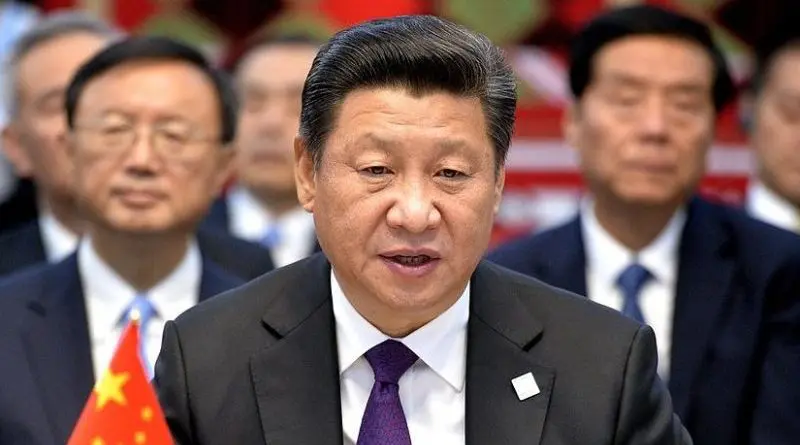Will Xi’s Dhaka Visit Change Dynamics Of India-Bangladesh Ties? – Analysis
By Anand Kumar*
When Chinese President Xi Jinping visited India for the BRICS summit in Goa (October 15-16, 2016), he chose to come here via Bangladesh. Interestingly, now it appears that what happened in Dhaka was actually geo-politically no less important than the outcome of the 8th BRICS summit.
This was the first visit by a Chinese President to Bangladesh in the last 30 years. During this visit, China tried to display its economic might. This has made many people wonder whether that would also affect close India-Bangladesh relationship.
The most important development of the visit was a $24 billion credit line that China has offered to Bangladesh. This is the highest credit line Bangladesh has received from any foreign country. This leaves far behind India’s credit line of $2 billion. Bangladeshi and Chinese firms also signed trade and investment deals worth $13.6 billion.
Bangladesh was waiting with lot of optimism for Xi Jinping’s visit. And the outcome of the visit left Bangladeshis only further elated. Abdul Matlub Ahmad, head of the Federation of Bangladesh Chambers of Commerce and Industry (FBCCI) said the deals reflected Dhaka’s improving security situation after Bangladesh launched a crackdown on Islamist extremists. He also observed that these agreements indicate that Bangladesh is a safe investment destination.
The investment of the Chinese firms, to be done mostly in investment parks, would be in infrastructural development, leather and readymade garments, pharmaceuticals, automobiles and other sectors. Bangladesh has agreed to set up industrial parks exclusively for Chinese investors near the strategic Chittagong port. It hopes that the Chinese industries in these sectors would shift to Bangladesh to take advantage of cheap labour.
China is the largest trading partner of Bangladesh. But this trade is heavily skewed in favour of China. Bangladesh is exporting goods worth about $808 million while imports from China are valued at more than $10 billion. To correct the situation, Bangladesh has been demanding greater access to the Chinese market. Though China has given some facility, this is not sufficient to bridge the gap.
Interestingly, despite this trade gap, both China and Bangladesh have signed an agreement to conduct a feasibility study on China-Bangladesh free trade agreement. Dhaka has so far been reluctant to sign a bilateral FTA with China. Instead, it has sought unilateral duty-free and quota-free access for its products in the Chinese market.
Besides deepening of economic ties, China has also decided to turn the bilateral relationship into a strategic partnership. This was once again seen as a Chinese effort to step up competition with India for regional influence.
Most importantly, Bangladesh backed Xi Jinping’s Belt Road Initiative. Dhaka thinks that it would boost trade and transport and provide better connectivity across Asia into Europe. India, however, has reservations about this project and thinks that it is a Chinese attempt to build a vast zone of Chinese influence.
Actually, Bangladesh has been a strong supporter of the Kunming initiative now known as the Bangladesh-China-India-Myanmar (BCIM) Economic Corridor. The region for supporting BCIM and the Belt Road Initiative are the same. In fact, the BCIM project could be seen as part of the larger project Belt Road Initiative. In that sense, the Bangladeshi support for the Belt Road Initiative was nothing new, but it has important geo-political implications.
In recent times, Indian diplomacy has been somewhat successful regionally, especially in its effort to isolate Pakistan. The India-Bangladesh bilateral relationship is at a new high. This kind of bonhomie has not been seen between the two sides in the past. India received strong support from Bangladesh in the wake of the September 18, 2016 Uri attack.
Bangladesh, along with Afghanistan, also boycotted the SAARC summit in Pakistan, though each had their own reasons. Bangladesh boycotted because Pakistan was critical of war crime trials going on in that country and Dhaka perceived it as an interference in its internal affairs. Though the boycott of other countries was not necessary, as SAARC remains a consensus-based organisation, their unwillingness to attend the summit indicated that they also view Pakistan as a problem in attending the goal of regional peace and cooperation.
This small diplomatic gain of India could vanish swiftly if China’s economic and political influence continues to rise in South Asia. To dominate South Asia, China is keen to get into SAARC and some of its strongest votaries are Pakistan, Nepal and the Maldives. As China is trying to engage South Asian countries into bilateral free trade agreements, it might also ask them to support its cause of full membership of SAARC. It may also influence them to adopt a pro-Pakistan approach.
In short-term, however, this is unlikely to happen in the case of Bangladesh as Prime Minister Sheikh Hasina expressed her disappointments with Pakistan publicly on several occasions.
Countries like Afghanistan also see Pakistan as a source of their problems. But growing Chinese influence could change this situation, especially as the economic dependence of these countries on China increases.
The Chinese are capable of springing surprises. They have done it in Southeast Asia where the Philippines recently changed side and joined China despite its aggressive posture in the South China Sea.
India has to carefully watch China’s moves in South Asia where Beijing would like to deepen its influence.
*Anand Kumar is an Associate Fellow at the Institute for Defence Studies & Analyses (IDSA), New Delhi. He can be contacted at emails: [email protected]; and [email protected]

